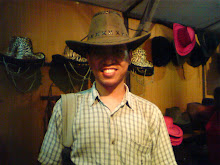A supply chain is a strand, or chain, of operations that passes through an organization's supply network. Many different terms (and the concepts described by them - e.g., purchasing and supply management, physical distribution management, logistics, merchandising, material management, and SCM), some of which overlap are used to describes various parts of the SC. They represent an increasing degree of integration among the SC linkages.
SCM is a broader and strategically more significant concept that includes the entire SC, from the supply of raw materials through manufacture, assembly, and distribution, to the end customer. It includes the strategic and long-term consideration of SCM issues as well as the shorter term control of flow throughout the SC.
The exact nature of the relationship among the different linkages within the SC can be viewed on a continuum that goes from highly integrated at one extreme to temporary and short-term trading commitments at the other. The organization tries to define the totality of working tasks, their mutual relationships, connections and synergies, as well as mechanisms for the suitable connection and coordination of organizational factors.
For the formation of the working structure, the organization is able to use different starting points. Modern conditions of work demand that organizations include into the structure plans the characteristics of the informational process needed for the realization of organizational aims. The organization can use the traditional or modern plan for the formation of the structure. The traditional access to the formation of the structure is based on considering vertical informational connections. But for most organizations, the vertical connections are not enough, so they fulfill them with horizontal connections.
For the formation of the organizational structure, the organization can use functional grouping, divisional grouping, grouping with more viewpoints, and horizontal grouping. Different structures in the frame of functional, divisional, and horizontal structures define different levels of coordination and integration of an organization.
In the frame of functional and divisional structures, the management is able to create total business support by forming whole vertical and horizontal connections. In such a way, the efficiency of present vertical connections will increase and the integration of the organizational work will improve. In horizontal structures, the activities are organized horizontally around the basic (or key) working process. Most organizations form specific hybrid structures, which include characteristics of two or more structure types, on these starting points.
Source Dr. Vojko Potocan, University of Maribor, Slovenia
The Best Vaporizer Pens For Dry Herbs
8 years ago

 Add to Technorati Favorites
Add to Technorati Favorites







